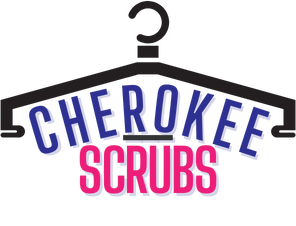Let's talk scrub jackets...and lab coats, too.
Scrub jackets are more than just a fashion statement...or a way to keep warm in a chilly clinical environment. They were originally intended as an infection control measure - and most healthcare workers are surprised to learn the truth behind these popular garments.
Healthcare workers who work directly with patients are exposed to pathogens. These pathogens are serious enough to make the patients ill - and they don't need to be given a chance to spread to other patients or the community at large. In order to understand how we can prevent that, we consider who is wearing scrubs and what kind of contamination they are exposed to.
Scrubs have come a long way and are no longer just worn in the surgical department. Fast forward 50+ years, and everyone even peripherally involved in medical or nursing care wears scrubs. Gone are the traditional white nursing uniforms commonly worn by bedside nurses of the past, replaced with functional, stylish modern scrubs. But, while the fashions have changed, so have the pathogens. Today's nurses are dealing with more virulent pathogens, and performing more invasive procedures in their daily tasks. This is where scrub jackets SHOULD be considered - to play a crucial role in infection control practices (click here to see my FAVORITE scrub jacket!).
Since medical professionals come into contact with many different pathogens at work, their uniform is quickly contaminated throughout their shift. Most hospitals or other facilities do not have locker rooms to change before you go home, which means you are wearing those contaminated scrubs in your car, to the grocery store, when you pick up your child from day care and into your very own home. Scrub jackets were designed to cover scrubs once you left the clinical environment, to keep the pathogens contained until you could remove the garments at home. Scrub jackets should be worn before and after work, but traditionally not DURING work (as they would become as contaminated as the rest of your clothing), for effective infection control.
Lab coats on the other hand, are traditionally worn by doctors or other healthcare providers. Since they work predominately in an office setting, as well as visiting the hospital to check on their admitted patients, they are working in two different environments - with different pathogens. White coats were generally worn while IN the hospital, to protect their clothing from contamination, then removed before leaving the clinical setting and returning to the office. This kept their clothing covered while in the acute care setting and was a popular measure to help minimize the spread of infection. Many physicians wore a separate white coat in their office for the same reason.
So, scrub jackets were worn OUTSIDE of work, and lab coats were worn INSIDE the hospital, both to help with infection control. Wearing a scrub jacket while working is just making it another part of your uniform - contaminated after use. This means it needs to be washed after every use (like your scrubs) and will not restrict pathogen transfer to your car or home or the community.
But there is hope! New processes and materials in scrubs manufacturing are being developed to hinder or prevent the growth of bacteria on scrubs! This means less contamination, and less opportunity to transmit these pathogens outside of work. Now, scrub jackets can function as a part of your uniform, rather than an infection control strategy.
Want to learn more on this new technology? Stay tuned for an upcoming article on a revolutionary new process developed by Cariesmatic brands called Protex!
